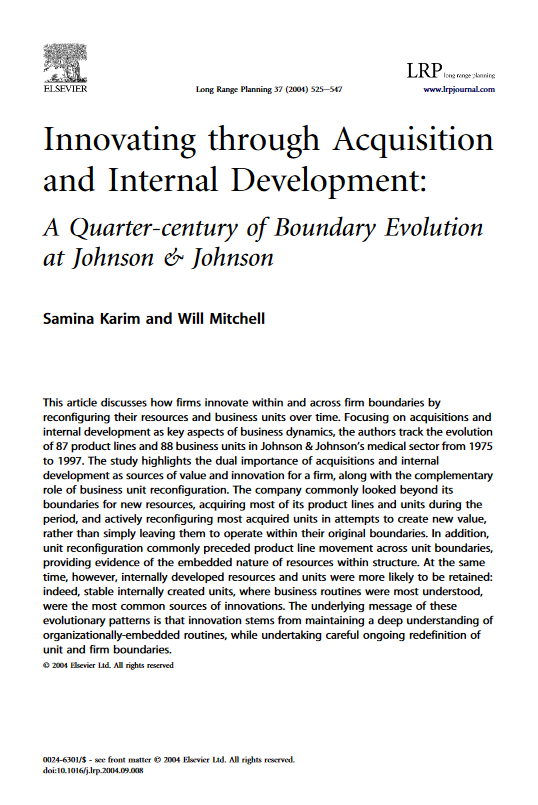Publications
Samina’s research has been published in a wide array of top journals including the Academy of Management Journal, Harvard Business Review, Management Science, Organization Science, Sloan Management Review, and Strategic Management Journal. She currently serves as Deputy Editor at Organization Science, and on the editorial review boards of Journal of Organization Design (where she was Senior Editor 2013-2017), Strategic Management Journal (where she was Associate Editor 2014-2020), Strategic Organization, and Strategy Science.
- Acquisitions
- Alliances
- Bottlenecks
- Competition
- Complex Systems
- Decentralization
- Decision making
- Hierarchy
- Human capital
- Innovation
- Knowledge recombination
- Modularity
- Organization design
- Patenting
- Reconfiguration
- Resource redeployment
- Scientists
- Sector: Airlines
- Sector: Banking
- Sector: Education
- Sector: Energy
- Sector: Medical devices
- Sector: Petrochemicals
- Sector: Pharmaceuticals
- Startups
View works on…

Business Unit Reorganization and Innovation in New Product Markets (2009)
We examine how business unit reconfiguration (as the creation, deletion, or recombination of business units) affects innovation. Innovation involves product market entry by a firm into
markets in which it was not previously active. We find that reconfiguration and innovation have a U-shape relationship, supporting learning arguments that stress the importance of experiencing a cohort of multiple events. Further, only reconfiguration experiences within a current period affect future innovation; past experiences do not impact future innovation, implying that firms may face constraints in organizational memory. The study concludes by exploring the structural origin (i.e., from internal, acquired, or recombined units) of innovative activity within firms.


MODULARITY IN ORGANIZATIONAL STRUCTURE:THE RECONFIGURATION OF INTERNALLY DEVELOPED AND ACQUIRED BUSINESS UNITS (2006)
Unit reconfiguration is the addition of units to, deletion of units from, and recombination of units within the firm. This study compares the reconfiguration of internally developed vs. acquired units, explores what forms of unit recombination are common, and observes whether firms pursue recombination before divestiture. We find that acquired and internally developed units serve different roles in the process of change, and that firms perceive reconfiguration to be beneficial.

Innovating through Acquisition and Internal Development (2004)
We track the evolution of product lines and business units in Johnson & Johnson’s medical sector from 1975 to 1997. We found that J&J acquired most of its product lines and units during the
period, and actively reconfigured most acquired units in attempts to create new value, rather than simply leaving them to operate within their original boundaries. In addition, unit reconfiguration commonly preceded product line movement across unit boundaries, providing evidence of the embedded nature of resources within structure. At the same time, however, internally developed resources and units were more likely to be retained:
indeed, stable internally created units were the most common sources of innovations. The underlying message of these evolutionary patterns is that innovation stems from maintaining a deep understanding of organizationally-embedded routines, while undertaking careful ongoing redefinition of
unit boundaries.

PATH-DEPENDENT AND PATH-BREAKING CHANGE:RECONFIGURING BUSINESS RESOURCES FOLLOWING ACQUISITIONS IN THE U.S. MEDICAL SECTOR, 1978–1995 (2000)
We study how firms use acquisitions to achieve long-term business reconfiguration. We compare the relative extent of change by acquiring and non-acquiring businesses focusing on product line addition, retention, and deletion as forms of changing resources. We develop and test hypotheses that compare and contrast resource-deepening and resource extension arguments. We test the hypotheses with data from more than 3000 firms that offered more than 200 product lines in the U.S. medical sector between 1978 and 1995.
